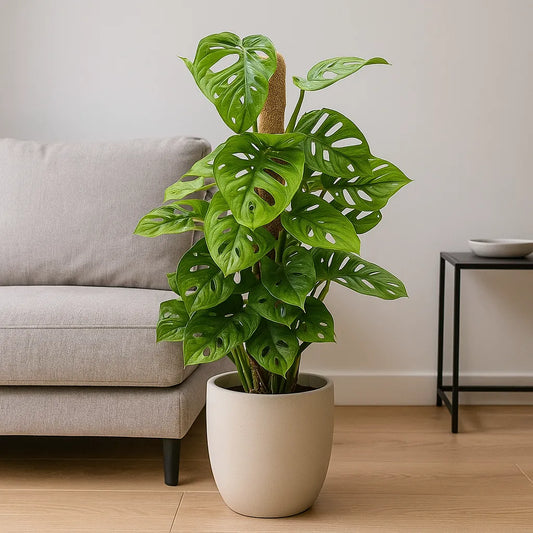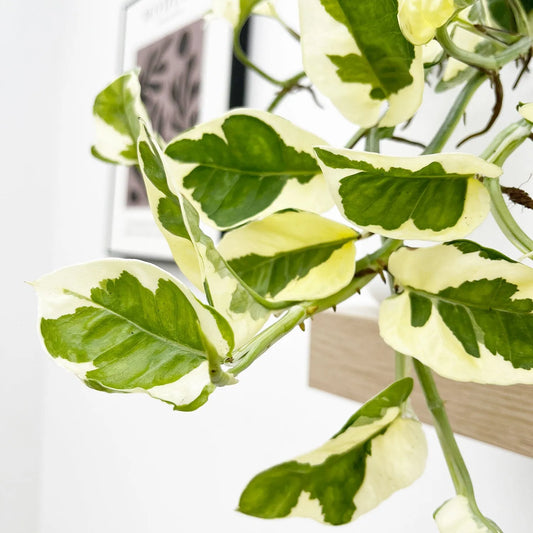How to care for Alocasia Zebrina
The Alocasia Zebrina is a stunning tropical houseplant that brings a beautiful, and unusual look into your space. It’s large heart-shaped leaves are a space-filling addition to the home that sit on top of large, zebra-like stems.
But, this wonderful looking plant is a temperamental one that will shed its leaves if the conditions are not ideal. Luckily, taking good care of your Alocasia Zebrina is easy if you know what it needs and how to attend to these needs. In this guide we will give you everything you need to grow a happy and healthy plant.
Soil
Your choice of soil is very important to keeping your Alocasia Zebrina alive and thriving. Make sure to use a very well-draining soil that lets you avoid overwatering the plant by draining any excess. To help the soil drain well, add a layer of gravel to the bottom of the pot and make sure it has enough drainage holes.
Pot Size
The Alocasia Zebrina is rare in that it likes to be root bound in a small pot. You won’t need to repot this plant for a while. You will only need to repot your Alocasia when the roots begin to poke out of the bottom of the pot. When this happens, upgrade to a slightly bigger pot and water well to help it cope with the stress.
Temperature
Your Alocasia Zebrina will thrive in temperatures between 18-25ºC. Avoid sudden temperature changes and keep it out of cold draughts that may kill it.
Watering and Humidity
As a tropical plant, the Alocasia Zebrina needs a humid environment to thrive. This makes it the ideal plant for the bathroom or kitchen, but it doesn’t that doesn’t mean it can’t be placed in other rooms of the house. In less humid spaces you should mist the leaves regularly to keep them glossy and looking healthy. You can also put the plant on a pebble tray.
When to water an Alocasia Zebrina
Just because this plant loves humidity doesn’t mean it likes too much water. If anything you are better off slightly under watering an Alocasia to better replicate its natural environment and encourage it to store water in its stems which makes them look more healthy.
Unlike other houseplants, don’t judge how often you should water based on the dryness of the soil but on the look of the leaves. When all the stems begin to droop it’s time to water your plant. Sticking to this schedule rather than soil moisture will allow you to adjust your watering to seasonal and temperature changes throughout the year. When watering, only do so until water begins to run out of the pots drainage holes as the Alocasia Zebrina doesn’t like sitting in wet soil.
Sunlight
Like all tropical houseplants, the Alocasia Zebrina needs a lot of sunlight. Ideally, choose a room with a south facing window that receives a lot of bright, indirect sunlight throughout the day. Avoid putting the plant in direct sunlight as this will yellow the leaves, but if this happens you should just move it further into the shade and it will recover quickly.
This plant loves sunlight, and if it doesn’t get enough it will reach towards the nearest light source it can. This will lead the plant to lean or become leggy. To get round this and achieve constant and even growth you should rotate the plant pot by 90 degrees after you water it. If your plant is not leaning or reaching it is a sign that it is getting enough sunlight and doesn’t need to be rotated.
Fertiliser
The Alocasia Zebrina is a fast growing houseplant that grows fastest from spring to early autumn. During this time you should fertilise the plant every two weeks with a diluted liquid feed. This will give the plant the energy it needs to to keep growing quickly, and retain its glossy appearance. Make sure to flush out the remnants of the fertiliser once every few months to keep the soil clear by watering thoroughly and letting the water drain through the pot.
Alocasia Zebrina Care Troubleshooting
Yellowing or spotted leaves - If you find that the leaves of your Alocasia Zebrina are beginning to yellow or start to spot it is likely that your plant is being overwatered. Make sure to leave the soil to dry out before watering again and it will recover quickly.
Browning edges on leaves - This is usually a sign that your plant is sunburned or is under watered. Move the plant out of any direct sunlight and check the soil to see if it is too dry. If it is, water it lightly.
Leaves dying or fading in winter - Your Alocasia Zebrina will go dormant in the winter so this is a natural thing to happen. If you find that this is happening to the leaves, reduce the amount you water and move to a warmer location.
Take a look at our full range of Alocasia Zebrina plants.











Leave a comment
Please note, comments need to be approved before they are published.